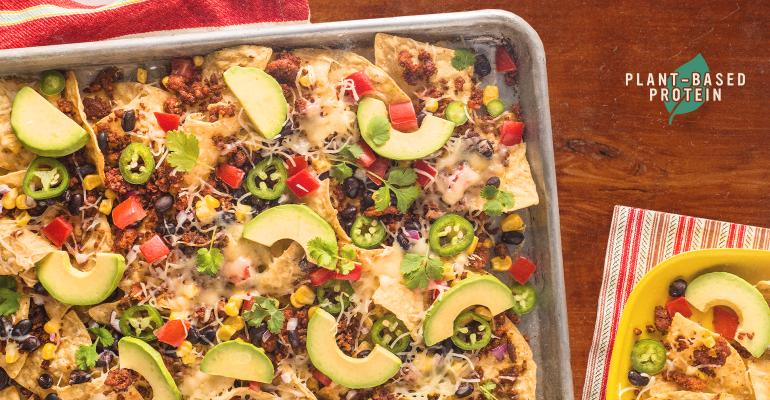Sponsored by Nestlé Professional Sweet Earth
This may be the end of the veggie plate as we knew it. When a Michelin three-star restaurant like Eleven Madison Park in New York City goes 100% vegan, it’s clear that something big is happening in the food world.
That would be the plant-based eating trend. According to Datassential, “plant based” grew a whopping 3,298.6% on U.S. menus over the past four years1, and more consumers—especially Gen Z and Millennials—are eating more plant foods and plant-based proteins, even if they don’t identify as vegan or vegetarian.
Plant proteins are an especially hot topic, in fact. And as with so many things, the pandemic accelerated it, as more homebound consumers sampled plant-based meat for the first time in 2020—30% of respondents in a Revenue Management Solutions survey, for reasons of health and the environment, among other issues. Furthermore, 23% said they would likely switch to another restaurant brand if it offered plant-based meats.2
Clearly it’s time to integrate more plant-based offerings into menus, with heavy produce focus, plus plant proteins like beans, grains, nuts and seeds, and plant-based meat. And the key to making them sell among carnivores and flexitarians is to create craveable specialties.
Burgers and other sandwiches, global items (such as Indian, Mexican, and Asian), pizza, pasta, and salads are especially well-suited to plant-based applications, along with grain bowls, blended drinks, and appetizers. And remember that “plant-based” doesn’t have to be entirely free of animal products such as cheese, eggs, and small amounts of meat. The point is to eat more whole plant foods, and reduce consumption of meat, not do away with it altogether.
- Add a plant-based signature to the burger section—not just the obligatory patty substitute, but an item with a distinctive bread, sauce, toppings, and condiments.
- Offer a plant-based appetizer share plate anchored by something like chickpea fritters, dried fruit and nut mix, and guacamole and crudités.
- Blend protein powder, peanut butter, and/or protein-rich kale into a hearty smoothie.
- Sub plant-based sausage or bacon in a breakfast sandwich, or use tofu scramble.
- Load a salad with black beans or another legume, or add plant-based meat crumbles.
- Use cauliflower: as a rice substitute, in pizza crusts, grilled or pan-seared as steak over a whole-grain pilaf, instead of chicken in a Buffalo prep.
- Integrate plant-based meats into items like chili, tacos, picadillo, lasagna, “meatballs,” pizza, and other mixed dishes.
- Base a grain bowl on a high-protein (and on-trend) grain such as kamut or quinoa topped with colorful vegetables such as sautéed cherry tomatoes and diced zucchini.
- Look to flavorful, versatile high-protein vegetables such as avocado, peas, corn, artichokes, mushrooms, and spinach when crafting plant-based specialties such as pasta, sandwiches, and salads.
- Create a stuffed vegetable entrée using eggplant, colorful orange or red peppers, sweet potato, or zucchini filled with grains and other vegetables, plus nuts such as cashews.
- Brighten up a hummus or falafel sandwich with zesty pickled vegetables, dukkah or zhug, and fresh herbs.
- Make queso with nut- or potato-based cheese with salsa, beans, cilantro, scallions, and red onions mixed in.
- Use jackfruit in preps that are traditionally made with meat, like fajitas, barbecue sandwiches, or curry.
- Menu an entrée based on a global vegetable stew such as ratatouille or Middle Eastern bamya.
- Asian specialties such as soba noodles, pho, and fried rice are a great place to use plant foods such as bok choy, edamame, snow peas, butternut squash, and more.
Sources: 1. Datassential SNAP! Plant Based (2021). 2. Revenue Management Solutions, Restaurant Consumer Report, Q3 Update

